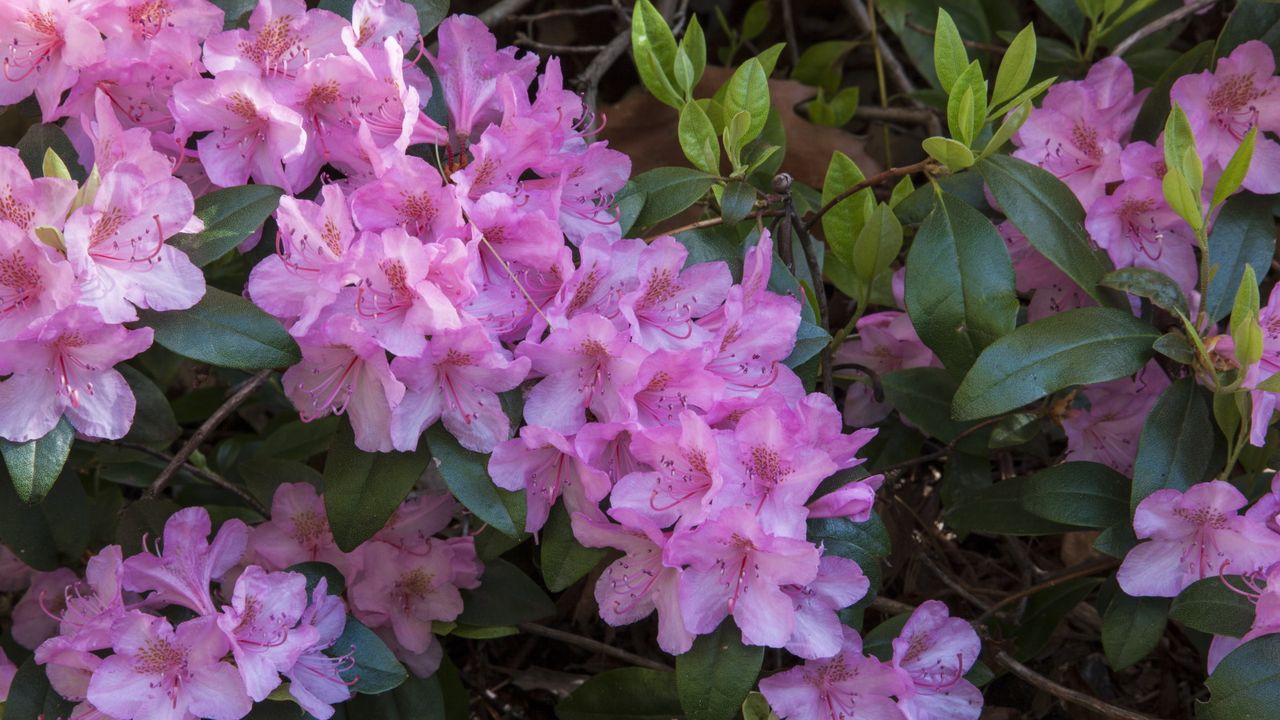
Ever wondered how to prune rhododendron? These seemingly common shrubs can sometimes be a mystery to gardeners. They are often overlooked as large plants that can swamp garden spaces, but rhododendrons are border stalwarts and when in flower demand attention.
Growing rhododendron, on the whole, is low-maintenance, and due to its reliable nature it's often used in ornamental landscaping. This fascinating diverse genus of plants has over 1,000 colorful species of evergreen shrubs and deciduous rhododendron and azalea, with palettes ranging across the spectrum from white, yellow, orange and red through to pinks and purples. These prolific bloomers are also a big hit with pollinators.
Whether you grow dwarf Rhododendron impeditum ideal for USDA zones 5-8, to giant Rhododendron 'Broughtonii' trees, hardy down to -5°F, that can live for over 130 years, there is a variety apt for most gardens. It is important to know how to prune rhododendron – as well as when to prune rhododendrons – to keep them looking their best and blooming year on year.
How to prune rhododendrons – evergreen varieties
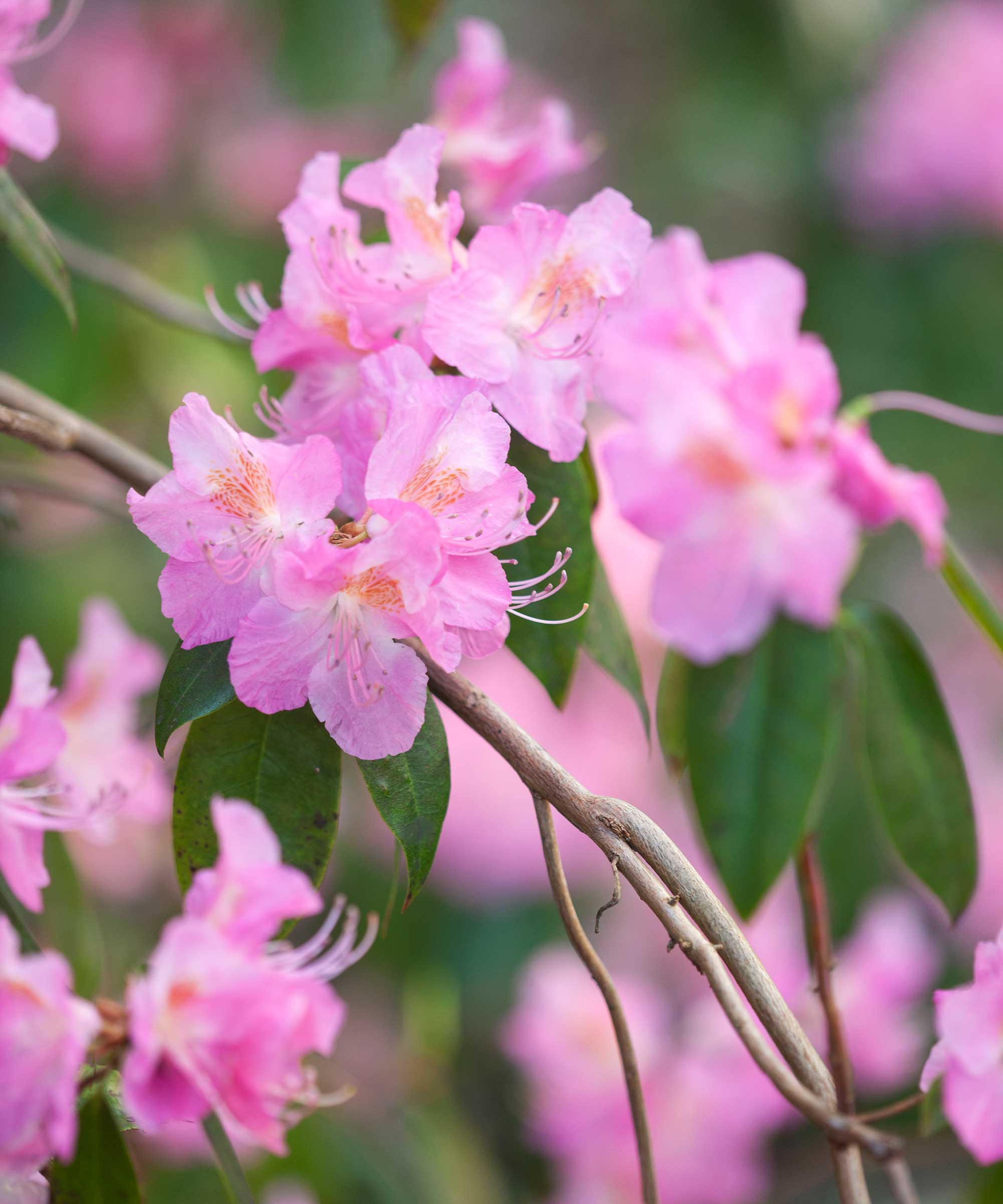
Our advice will focus on how to prune evergreen rhododendron, which will differ from how to prune azaleas.
The fundamental basis of pruning is to reduce height, maintain plant health and invigorate new growth and blooms. Methods will often be similar for other flowering shrubs.
The first step is to take a good look around your shrub. Note its shape, overall health and condition. Remove any dead, diseased or damaged material and check if there are any visible pests or problems.
Of course, you should also be equipped with essential pruning tools to get the job done. These Fiskars pruning shears from Amazon are a reliable choice.
Pruning helps avoid shrubs becoming completely overgrown but how do you prune rhododendron to maintain a natural look?
When to prune rhododendrons
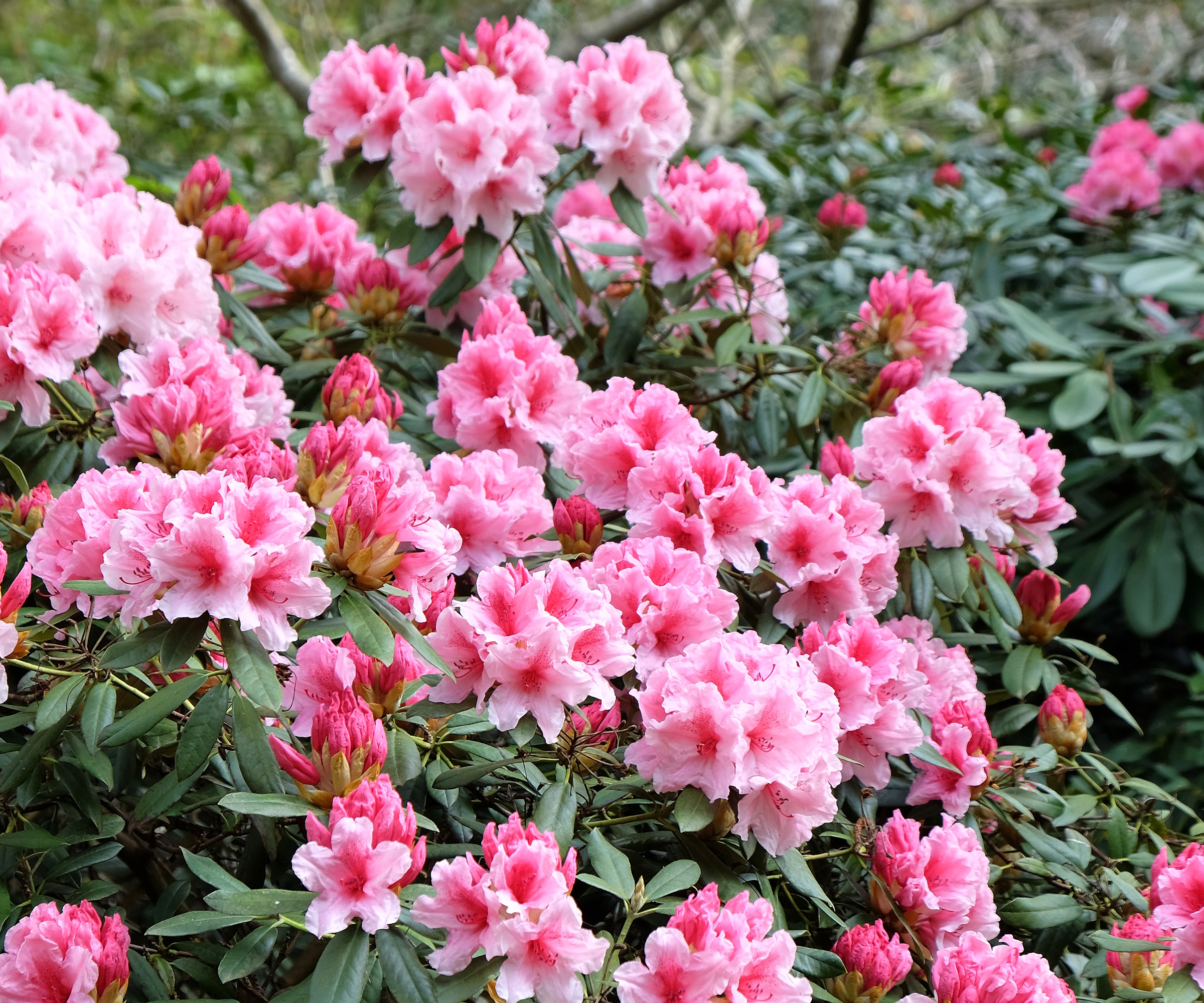
Beautiful and hardy stalwarts of the border and rock garden, knowing when to prune rhododendrons is essential if you want to keep them in tip-top condition.
These shrubs generally need little care and attention but occasionally you will need to thin and remove dead and damaged branches in which case this is best done after flowering as Dan Gilchrist of Swansons Nursery explains:
‘You can prune a rhododendron almost any time of year without harming it, but the best time is within a few weeks after it has finished blooming, to give it the maximum time to set flower buds for next year. Waiting too late is no disaster but could mean fewer blooms for the next year (or a few years if you are pruning it back hard).’
Deadheading your rhododendron in the timeframe Dan advises will help the shrub to put its energy towards bud development for next year. Failing to do this and waiting too long is a pruning mistake to avoid.
There may be a time when a mature rhododendron needs a complete overhaul. It could be that the overall shape has become leggy and unbalanced or that it has simply outgrown its space. Whatever the reason, this pruning job is not for the faint-hearted, and knowing when best to undertake it is key.
‘If your rhododendron needs to be significantly reduced in size using a pruning saw (from Amazon), this should be done over winter when the plant is dormant, between January and March,’ says Kris Collins at Thompson and Morgan. ‘You may sacrifice a few flowers in the spring, but it gives the plant a whole season to regrow.’
How to prune young rhododendrons
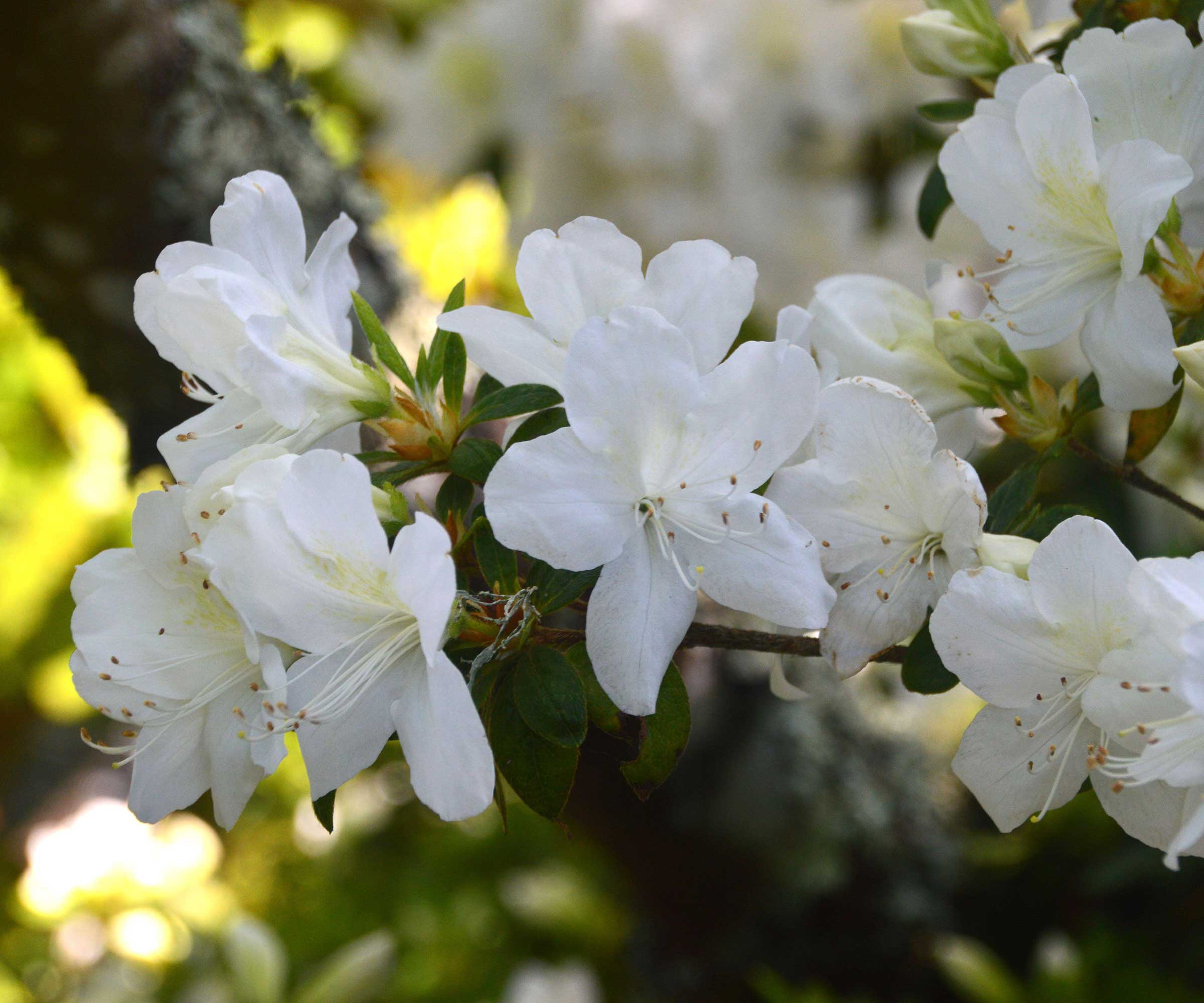
Even young rhododendron can sometimes need a bit of pruning to encourage new, stocky growth.
‘On young rhododendrons, or those which are looking a bit sparse, we recommend pinching out single growth buds as they start to swell to encourage multiple branching. This will ensure that your plant retains a nice bushy shape,’ says David Millais, owner of rhododendron specialists Millais Nursery, experts in the art of rhododendron pruning.
‘Simply snap out the leading growth bud at each whorl of leaves as they start to expand. Instead of one lanky shoot, you should gain three to four bushy shoots from the buds above the leaf petioles, each of which can support flowers the next season,’ he adds.
To protect your hands when doing this, make sure to wear gardening gloves. These thorn-proof gardening gloves from Amazon will protect your hands from any sharp stems.
How to trim and shape a rhododendron
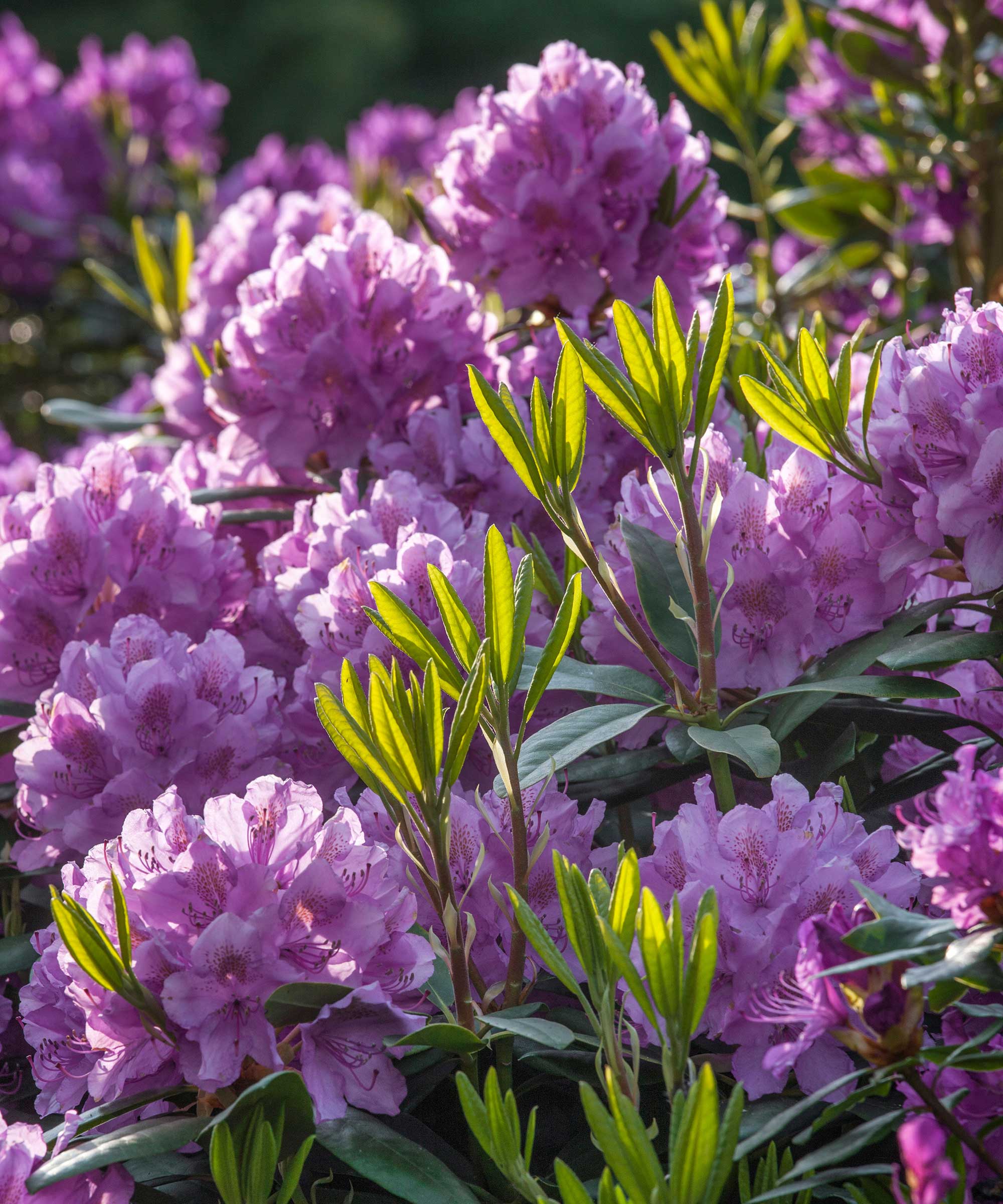
An important part of pruning a rhododendron is shaping and crown lifting.
SHAPING: ‘I avoid snipping away small bits as you can end up with a hedged look – flat on one face rather than a nice rounded shrub. Look carefully at the misplaced branches, find a node, where the branches are coming out in a whorl, and remove the central extension growth. This will allow those lateral branches to quickly hide the pruning scars,' explains Bethan Pettitt, head gardener at The Brantwood Trust.
CROWN LIFTING – Another way to enhance the look of your rhododendron is to lift the crown or as Bethan likes to call it, ‘stem beautifying.’
‘In thick, tangled areas of large, mature rhododendron where you don’t want to remove the plants or hard prune, as they might be an important screen – or privacy hedge – clear spindly growth from the base and main branches showcasing the wonderfully twisted, contorted shapes of the multi-stemmed trunks,’ she advises
'This sometimes requires a little follow up the next season. Simply run your hands over the stems the next year removing any soft sappy regrowth, it’s a satisfying task,’ she adds.
Pruning can often feel like sculpting. As gardeners we are essentially helping nature to create a piece of living art.
‘If shafts of light make it through the canopy, highlighting the stems and playing over the fallen blossom on the woodland floor, then all the better,’ says Bethan.
How to cut back a rhododendron
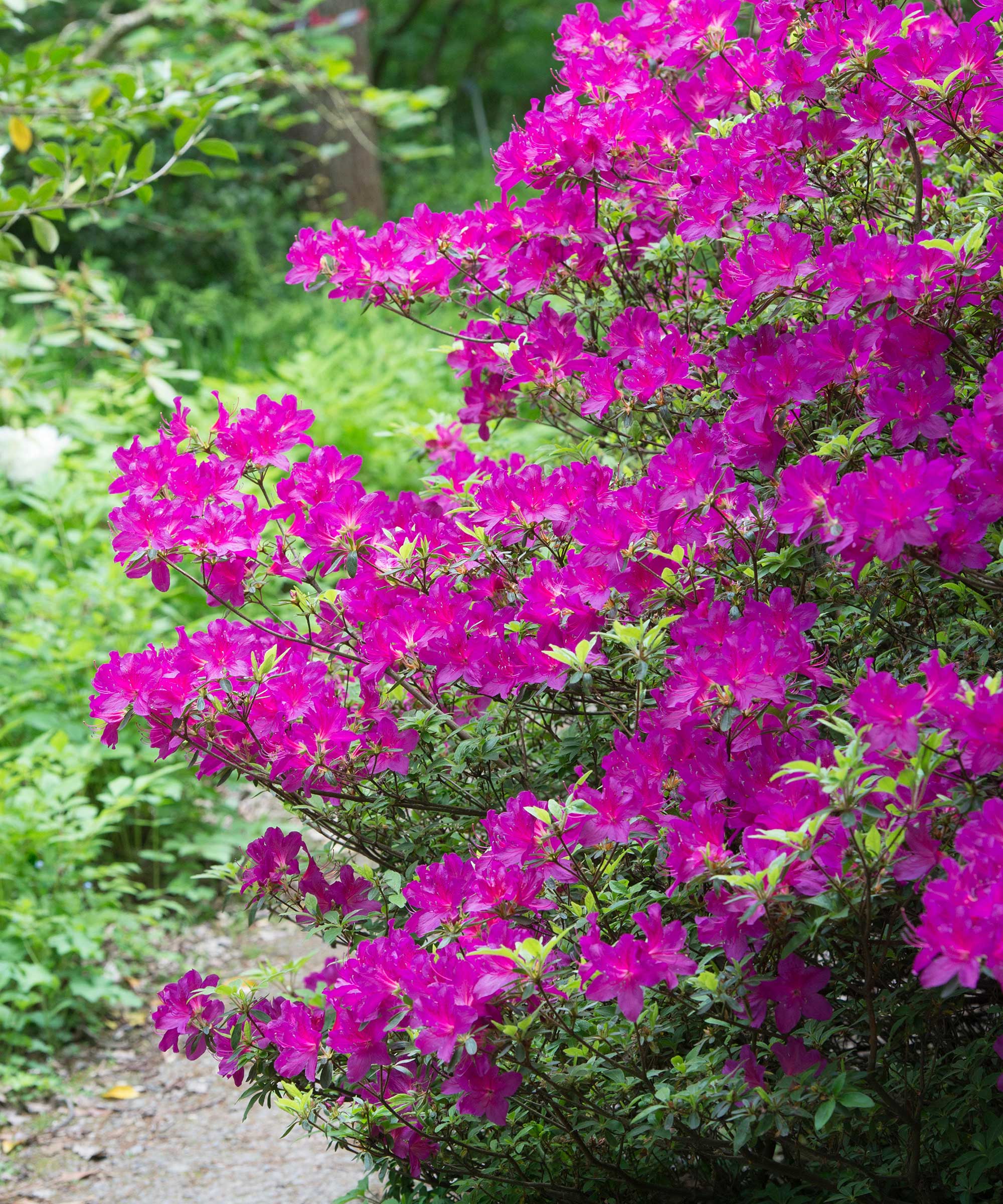
In terms of how to revive old rhododendrons, established plants may eventually need a heavy prune to rejuvenate the plant. Prune on a frost-free day when the shrub is dormant during late winter to very early spring.
‘Sometimes radical coppicing is required, but this will open up a large hole in the landscape. Unfortunately, there are no half measures, and it is best to cut hard back almost to stumps, so that growth starts low down to create a bushy plant from ground level,’ David Millais advises.
‘If possible, leave a few green shoots to help draw the sap up through the plant. New growth starts from dormant buds below the cut, forcing their way through the old trunks during May and early June. Species with smooth bark typically do not respond well to coppicing,’ he adds.
For a heavier job like this, you may need to use loppers (from Amazon).
‘Be sure to clean your garden tools after use to prevent the spreading of diseases, such as Phytophthora,’ says Bethan Pettitt.
Always clean tools with a disinfectant (like this spray from Walmart) before pruning different plants to prevent cross transfer of diseases.
FAQs
What happens if you don't prune rhododendrons?
While pruning will maintain a good shrub shape, there is often no need to prune rhododendrons at all – simply deadhead after your plant has finished blooming at the end of spring to ensure that all the plant’s energy is concentrated into producing foliage and not seed.
If your garden plot allows, leave rhododendron to grow naturally with minimal intervention. Of course, if it out grows its space, you'll need to prune it. If left unpruned in this circumstance, your rhododendron can become leggy and unsightly.
Can I prune rhododendrons in winter?
The short answer is yes – but this is usually best for when the shrub needs completely rejuvenating. According to the American Rhododendron Society, 'Pruning of hardened wood can be done at any time except during periods of freezing weather. Early spring generally is best because the new growth then has a full season in which to develop and mature. Pruning immediately after the blooming period is standard practice.’
After pruning, mulch your shrub with peat-free ericaceous compost (from Amazon) or leaf mulch. If you are growing rhododendrons in pots as part of your container gardening ideas, then remove the first few inches of soil and top dress with fresh compost.
Water with rainwater and ericaceous feed (like this rhododendron fertilizer at Amazon) to fertilize rhododendrons and give them a boost while they recover from their prune. Rhododendron have shallow roots so be careful not to over or underwater them as this can affect your plant's health.







